Rotaxane-like assembly formed from mechanically interlocked carbon nanotubes and macrocylic porphyrin rings
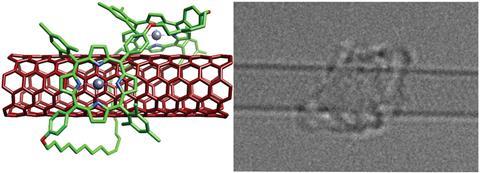
Scientists have created the first rotaxane-like assembly between carbon nanotubes and porphyrin rings, unlocking a new class of material for applications in catalysis, magnetism and sensing.
Due to the extraordinary physical properties of carbon nanotubes and metalloporphyrins, researchers have made great efforts to combine the two into one assembly. However, conventional methods rely on covalent bonding between the two components, which can detract from their properties.
For the first time, scientists have now combined the two types of molecule through only mechanical bonding; closely associating the two without drastically altering the properties of either. In the same way that a locked handcuff cannot be removed from a drainpipe without breaking either the handcuff or the pipe, mechanically interlocked molecules cannot be separated from each other without breaking chemical bonds in one of the components.
The team around Emilio Pérez from the Autonomous University of Madrid in Spain and Dirk Guldi from the University of Erlangen-Nuremberg in Germany used a clipping strategy to make the rotaxane-like assembly. The process involved wrapping a U-shaped ring precursor around a nanotube, then chemically tethering the two ends of the ring together. Due to the relatively long length of the nanotube, the ring cannot slip off.
Given the promising electronic interactions between the two components, the scientists envisage that this work will stimulate new applications for carbon nanotube and metalloporphyrin assemblies.
References
This article is open access
A de Juan-Fernández et al, Chem. Sci., 2018, DOI: 10.1039/c8sc02492h
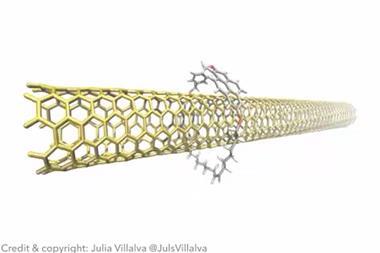
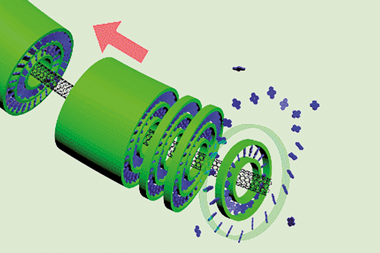
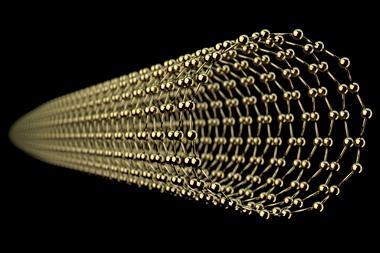
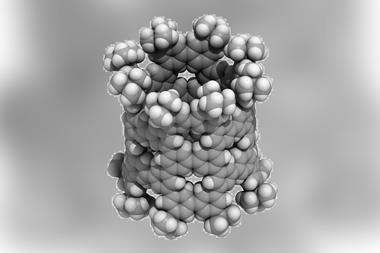
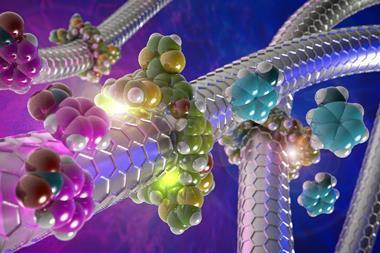
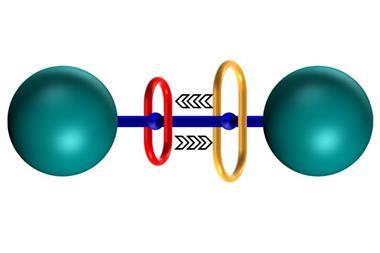






No comments yet